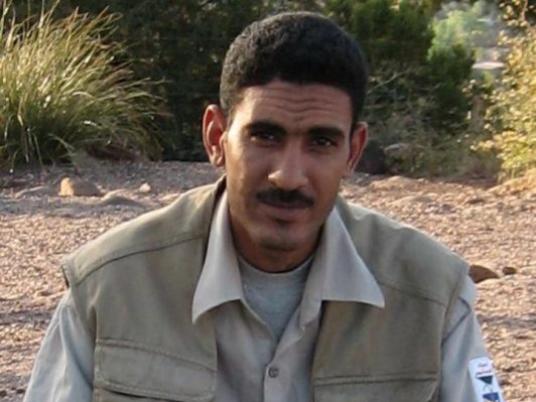
The Wadi Degla Natural Protectorate, a geological formation in southeast Cairo that is over 50 million years old, has recently come under threat from illegal quarrying and sand extraction operations. Industrial trucks and loaders have left trails of rubble and piles of rocky sand in the protectorate as evidence of their tampering.
According to Tarek al-Kanawati, the director of the protectorate, these violations have only been reported in a limited area in the northwest sector of the massive valley. Kanawati says that "only an area of 800 square meters has been affected" by these illegal operations. Yet tractor tracks and trails of rubble stretch across the protectorate for at least 3km in the northwest area of Wadi Degla.
Kanawati now says that these destructive activities have been halted.
He adds that wildlife, plant-life and natural geological formations have not been noticeably affected, "as this is not one of the more sensitive areas of the protectorate." However, he says, "What have been affected are the dirt tracks designated for bicycles and motorcycles."
Sands have been illegally extracted from the natural reserve, Kanawati says, due to their rich gypsum content “which is ideal for paving and construction work.”
“These violations have been halted as of 10 days ago,” the director continues. “We filed an official complaint to the police citing the violations."
Kanawati reports that nobody has been arrested. He explains that he and his staff met with representatives of the quarry workers, who are Bedouins from the area, and convinced them to halt all illegal quarrying operations.
The director claims that his staff are currently conducting patrols across Wadi Degla to prevent a recurrence. Most of the patrols are conducted at night, when most of the encroachments have taken place.
According to environmental activist Samer Behnam, however, "Not enough is being done to safeguard this protectorate.
"Wadi Degla, like other protectorates, has very few resources and not enough people to patrol…. It should not be designated as such if it is not actually protected,” he says.
The faint sounds of industrial drilling and jackhammers echo in the distance throughout the winding, 30km-long natural reserve. The sounds come from the quarries and granite and marble workshops that line the reserve's southern side.
There are some 300 factories and workshops currently located within Wadi Degla's buffer zone, occupying an area of 835,000 square meters in the southern part of the protectorate. A protocol signed in 2006 between the Industrial Development Authority, Egyptian Environmental Affairs Agency (EEAA) and Cairo Governorate authorized these factories and workshops to operate on around 800,000 square meters of land within the reserve's buffer zone. The EEAA designated Wadi Degla as a natural protectorate in 1999.
However, according to Kanawati, the hundreds of quarries, factories and workshops that have operated in the protectorate's buffer zone since 1994 will be dismantled and relocated by the end of the year in accordance with a previous protocol signed between Cairo Governorate and the Wadi Degla Natural Protectorate.
He admits, though, that Wadi Degla, which covers some 60 square kilometers, continues to be threatened by encroaching urbanization and industrialization on all sides. "There are residential quarters, quarrying zones, garbage dumps and cement industries bordering us. These areas are growing and moving toward the protectorate's borders."
According to Behnam, "There have been numerous transgressions within the protectorate's buffer zone, but now these transgressions have affected the protectorate itself.”
As Benham points out, "[Wadi Degla] is one of the few places in Cairo where visitors can go hiking, camping, biking and picnicking."
He says that he will be filing a complaint against Wadi Degla's administration before the EEAA on Saturday.
Wadi Degla is said to contain a multitude of different fossils, 64 species of plant life, numerous species of insects, 20 species of reptiles, 12 species of birds, bats, and, less commonly, larger animals such as rabbits, gazelles, foxes and tortoises.




